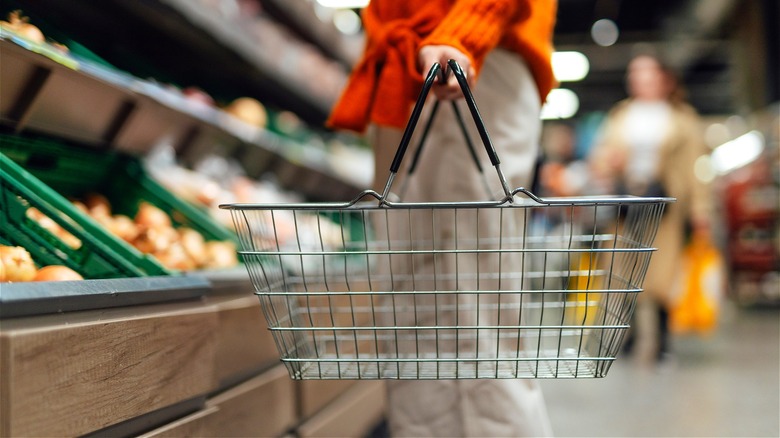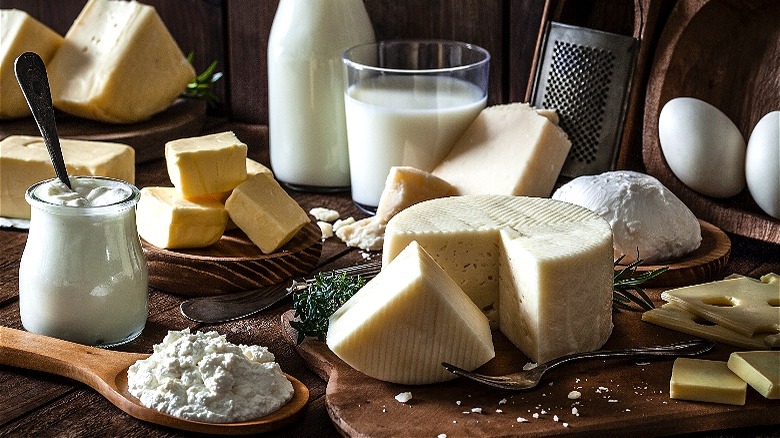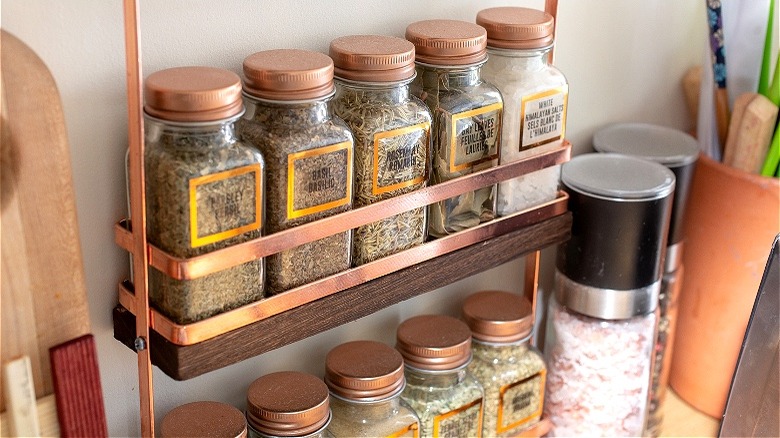These Grocery Items Have Some Of The Highest Store Markups
For the past few years, grocery prices have been high on the list of concerns and complaints about the economy. Between 2021 and 2023, the cost of food shot up 17%, and while the immediate cause of the spike in prices was pinned on the COVID-19 pandemic, politicians have argued since over whether price gouging, inflation, or the war in Ukraine is most to blame for their persistent rise.
Consumers have started to see some limited relief in certain food categories as of 2024. But if the larger forces of the economy aren't applying as much pressure on your grocery bill, that doesn't mean you aren't paying more today than you should. Grocery stores have all sorts of ways to get you to spend more, from rearranging the shelves to making the cheapest items harder to reach.
And then there are markups, those extra dollars and cents tacked on to cover overhead and profit. Markups can be as high as 100% for certain items in the store, and it doesn't take that much for the cost to not be worth it. Here, we take a look at some of the most outrageous markups you may encounter on your next food run.
Dairy products
Dairy is a big moneymaker for grocery stores. Just which kind Americans consume the most has changed in the past 50 years, but we still eat and drink a ton of it. Cheese alone can have up to a 35% profit margin — though the actual cheesemakers often see much less profit. It's an issue throughout the dairy industry. In 2023, Chicago-area milk farmers earned the lowest price in the U.S. for their milk despite it selling in their region at well above the national average.
Falling competition, combined with a lack of supply management, rough years for growing cow feed, and the many hands involved in transporting dairy from farm to store all help to drive prices up. Inflation played its role as well. But retailers also indulge in price gouging; milk, specifically, saw one of the highest hikes in 2024, at 17%. With farmers getting slim returns on their milk and consumers shouldering the higher prices at the grocery store, the financial blows of the current arrangement are felt at the two far ends of the supply chain.
Baked goods
It doesn't cost much to make your own baked goods at home. It's true that you'll have to buy each ingredient, and using home appliances to bake will show on your utilities bill (these kitchen habits, by the way, can help run up your power bill). But for, say, a high-quality bread, the total price tag for ingredients is modest. If you buy in bulk, you'll have plenty left over to make more, ensuring you fresh baked food and an aromatic kitchen for quite a while.
And you'll save quite a bit over time compared with buying baked goods at the grocery store. The smells of breads, cakes, and pies wafting from the bakery counter can be a powerful enticement to spend when you go marketing. But baked goods, like other prepared foods, are often sold for more than the sum of the ingredients they're made from. In fact, the price on bakery items can run up to three times what it would cost you to make the same thing at home. And increases in baked goods prices have run ahead of food inflation in recent years, thanks in part to a run of poor years for key grains and the supply chain disruptions caused by the war in Ukraine.
Name-brand items
"You pay for the brand" is an expression you will see a lot in shopping guides. To cover advertising costs, an extra couple of dollars will be tacked on to name-brand boxes of cereal, bags of flour, and jars of spice(s). Relative to the cost of the foodstuff itself, these can be some of the biggest markups you'll see in a grocery store. Consider, the average markup on name-brand cereal is around 28% (per a 2007 study published in the American Journal of Agricultural Economics), while herbs and spices can have a 100% markup.
With a few exceptions (natural peanut butter, olive oil, and salad dressing among them), there's little to no difference between what name brands offer and a generic version of the same thing. In fact, the real kicker in all this is that the same companies that own these inflated, marked-up brands are also often responsible for supplying grocery stores with generic versions.
Going for the generic boxes, jars, and cans for various staples can save you up to $20 a month. And, if you're willing to step away from one-stop grocery stores and give patronage to smaller shops, you can save even more. A jar of spices bought from a natural food store, for example, can cost you cents compared with the $5 you might pay for the same item at a major retailer. (On that note, here's how much of your income you should be spending on groceries.)



